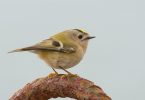What are the biggest birds in the world?
The biggest birds in the world are large and often defensive. Some of the big birds can fly and some of them can’t. In any case, it’s just amazing. Check out our list of the biggest birds in the world, however you define them – the tallest birds, the heaviest birds, the most beautiful birds, longest birds, the largest living bird, the biggest wingspan, the largest flying birds, or any other large bird species you can think of!
-
Common ostrich
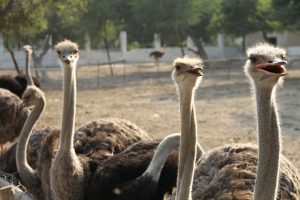
It reaches 2.8 meters in length and 160 kg
What are the biggest birds in the world? No competition, the common ostrich (Stuthio camelus) is the largest bird in the world.
It is the tallest and heaviest, with an average height of over six feet [2 m] (sometimes up to 2.8 m)) and weighing up to 160 kg. At this rate, the ostrich is, in fact, a bird that can fly, but it can pass over many animals at speeds of up to 40 miles per hour [69 km / hr], making it the fastest animal on two legs.
Their long, strong legs are double up like defensive weapons carrying powerful kicks to potential predators. The happy ostrich fact – they can live without water for days, produce water inside and extract water from plants.
-
Somali ostrich

It reaches 2.7 meters in length and 130 kg
The Somali ostrich (Struthio molybdophanes) ranks 2nd on our list for the biggest birds in the world. This bird is considered the youngest species of the common ostrich until 2014, when it was classified as a separate species. Originally native to Somalia and parts of Ethiopia and Kenya, the Somali ostrich is usually slightly lighter than its common ostrich cousin, but it is amazingly fast, and it can cover 15 feet [5 m] in one distance!
-
Southern Cassowary

It is often called the most dangerous bird on Earth, in addition to being one of the biggest birds in the world, the southern cassowary is about 150 pounds. On each foot there is a 5-inch claw used to protect themselves. At least two people have been kicked to death by them, the most recent being a Florida man who kept one of the them as a pet.
-
Northern Cassowary
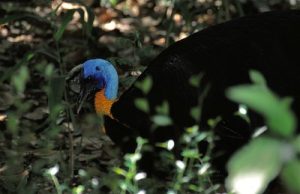
source: “Northern Cassowary (Casuarius unappendiculatus)” by berniedup is licensed under CC BY-SA 2.0
Up to 1.7 meters long and 70 kg
A small cousin of the southern cassowary, the northern cassowary (Casuarius unappendiculatus) ranks 4th in our list of the biggest birds in the world. This bird is endemic to northern New Guinea. Female species are larger than males, weighing up to 70 kilograms and measuring up to 1.7 meters long. In addition to their stocky build, the northern cassowary – also known as a single, one watter cassowary or a gold necked cassowary – can run at speeds of up to 30 miles per hour.
-
Emu

The emu (Dromaius novaehollandiae) is the second largest living bird (the largest relative of Emu, the ostrich)and one of the biggest birds in the world: up to 1.9 meters (6.2 ft).
The Emu bird can weigh between 18 to 60 kg, the females are slightly larger than the males. These are one of the fastest birds in the world and can run at a speed of 48 km / h (30 mph).
Today, Emu is endemic to Australia. The Tasmanian emu and King Island emu subspecies disappeared after the Australian settlement in Australia in 1788.
-
Great Rhea

This flightless bird is named after the Titan goddess Rhea ranking 6th in our list of biggest birds in the world, who gave birth to all the Olympic gods and goddesses in Greek mythology. Up to 5 meters tall and 66 pounds, a large rhea may not seem as terrifying as an ostrich. However, it congregates in large herds of up to 100 birds during the non-breeding season, so be aware of the possibility if you may be living in a South American area.
-
Penguins

Emperor penguins (Aptenodyte forters) are found in Antarctica and are the tallest and heaviest living penguins weighing 31.5 kg and measuring 114 cm in height. During the breeding season Emperor penguins lose up to 15 kg as they do not eat anything while protecting their eggs from freezing temperatures for more than 2 months. Like all penguins, Emperor penguins cannot fly but adapt to the harsh conditions of their cooler habitat than any other breeding bird. Feathers provide up to 90% of their placement and are able to raise their body temperature without altering their body composition.
Penguins (Aptenodytes patagonicus) weigh 13.6 kg on average and are 92 cm long. They breed in the Subantarctic Islands, as well as in Tierra del Fuego, the Falkland Islands, and other tropical islands.
-
Turkeys
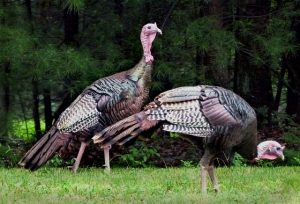
Wild turkey (Meleagris gallopavo) is a large bird species that can fly. They weigh an average of 13.5 kg and have an average height of 124 cm. Despite their size, they are quiet agile fliers staying close to the ground and flying more than 1,600 feet [400 m] at a time.
Wild turkeys are a species similar to the domestic turkey. They are natives of North America but got their name from a native Turkey which was not known to be unrelated species imported into Europe by Turkish merchants. Domestic turkeys fail to fly as they are overweight. Because they do not use their breast muscles, the breast meat is white, unlike that of the wild turkeys which are dark and very tasty.
-
Kori Bustard
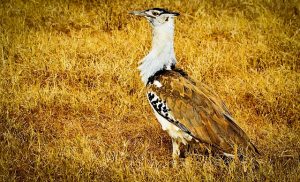
The kori bustard weighs up to 20kg and is native to Africa. The male kori bustard weighs twice as much as the female. This bird has wings as large as 9 ft.
Insects are the main food of the kori bustard but they also eat other animals too such as lizards, small snakes, berries and seeds. Unlike other birds, the kori bustard drinks by sucking motion. Kori Bustard spends most of their time on land, often in search of insects in grassy areas.
-
Andean Condor
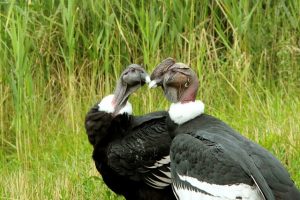
Andean condor belongs to the vulture family. This large bird is found in the Andes Mountains and along the coast of South America. They grow to a height of 1.2 meters and weigh up to 15 kilograms. The very large, 10-foot wings also indicate the size of the Andean conde. This huge wing also helps to make the flight with its huge body.
Like other vultures, the Andean condes eat the carcasses of other animals. Both domestic and wild. Andean condorans also like to have dead seals and fish from the coast. Sometimes they hunt another bird’s nest for eggs.
-
Dalmatian Pelican
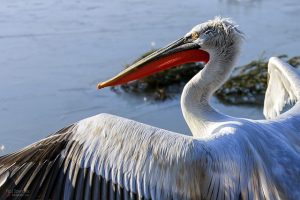
They are of European and South Asian descent. This large bird grows to a height of 6 ft. It weighs between 12 and 14 kg. The wingspan of an old Dalmatia pelican reaches 9 ft. They look exactly like the giant white pelicans. But the Dalmatian pelicans are great.
This bird’s bills measure up to 18inches in length and it is the second largest in the world. Fish is the main food of the Dalmatia pelican. Their diet includes eels, perch and catfish.
-
Mute Swan

Mute swan is a large water bird that grows up to 5 meters in size and weighs between 12 and 13 kg. They are native to European countries. Their diet includes insects, plants and fishes. The mute swans have neck reaching up to 8ft, the long neck helps mute swans to get food quickly under water.
Swans are clever and a little aggressive. Interestingly, they remember who they care for. Swans attacked during breeding season, biting the person who threatened them. Swans take good care of nests, babies and eggs.
-
Marabou Stork
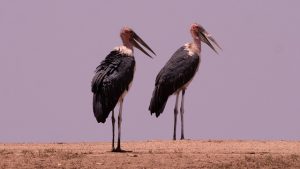
As if the red-tinged wattle, black back, and dagger-esque bill were not scary enough, the marabou stork is sometimes called the “funeral bird” because of its Dracula-like appearance. It also eats other birds. The largest verified wingspan of the marabou stork was 10.5 meters, though unconfirmed reports a specimen with a 13.3-foot statue.
-
Shoe Bill
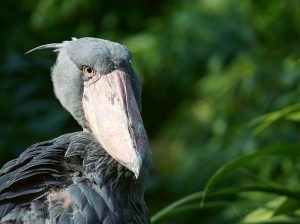
Shoebill storks may not be the tallest, heaviest, or winged birds, but they are sure to have a death stare. In addition to having a face nutcracker, a five-foot-long shoebill lives a dreadful lifestyle. It stands still for hours to hunt deer, look for lungfish or baby crocodiles, and spread its wings over it while catching its target in its bill.
-
Cinereous Vulture
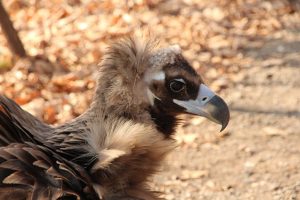
Another large ten-foot wingspan bird, the Old-World vulture has a fine vision of corpse when flying, and its wingless head that resists the accumulation of gore when it feeds. Although frightening to look at, the cinereous vulture plays an important role in its ecosystem by clearing roadkill and other dead animals.
The biggest bird in the world, by wingspan: Wandering Albatross
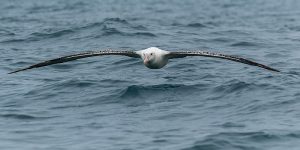
The wandering albatross bird is the world largest bird by wingspan than any other bird. This large, beautiful bird is native to the South and North Pacific oceans. Weighing up to 12 kg, the wandering albatross is the largest in the family.
The wandering albatross feeds mainly on small fish and squid. They also drink a lot of salty water. The albatross spends most of its time gliding and floating in the ocean. In fact, they were rarely found on land.
During the breeding season, wandering albatrosses congregate in colonies on remote islands. They lay only one egg after mating. Interestingly, the young albatross will fly for the first time in a few months.
Largest bird of prey: the Philippine eagle

The Philippine eagle (Pithecophaga jefferyi) is considered to be the world’s largest eagle in length and wing surface. It is typically measured 86-102 cm (2 ft 10 in -3 ft 4 in) total length. It also has 184 to 220 cm wings (6 ft 0 to 7 ft 3 in).
However, in terms of weight and bulk, the Steller sea eagle/ (Haliaeetus pelagicus), the Harpy (Harpia harpyja), and the Martial (Polemaetus bellicosus) are larger than the Philippine eagle.
Among the condor, also regarded as a carnivorous bird even though it is not the only predator, the subject goes to the Andean condor.
The largest bird ever lived
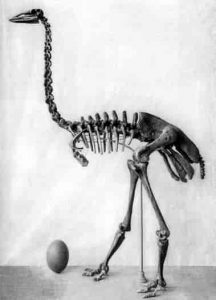
Vorombe Titan holds the record-the the largest bird ever lived weighed up to 536 to 732 kg, 3 meters high. The name of this bird was gotten from Greek meaning ‘’great bird’’.
Until recently, the Aepyornis maximus, a bird that lived in Madagascar until its extinction about 1000 AD, was considered the largest bird ever. However, in 2018 the largest specimens of aepyornithid, weighing up to 730 kilograms (1,600 lb), were transferred to the Vorombe related species.
Vorombe is one of three bird species of elephant’s birds.
However, in a 2018 study, James Hansford and Samuel Turvey, two researchers from London’s Zoological Society, found that it was quite different from Aepyornis and gave it a new version of Vorombe. They also saw the Aepyornis ingens as the same name for the Vorombe titan.
Their largest femur (MNHN MAD 368) measured by Hansford and Turvey could not be officially awarded to the party as it was incomplete. The specimen is thought to belong to Vorombe in terms of its size.
Large prehistoric birds
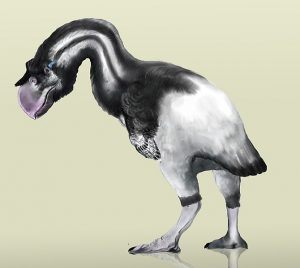
The largest known birds have ever been Madagascar’s elephant birds and also one of the biggest birds in the world. About the same size was the Australian Dromornis stirtoni. They both measured up to 500 kg in mass and 3m in height. Elephant birds was still extant about the 17th century.
The largest flight capable bird

Pelagornis sandersi, which was discovered in 1983 in Charleston, South Carolina, during the construction of an airport. It lived some 50 million years ago. The largest specimen found in Antarctica, with its wings, fully extended, is over 6 feet (6.4 m) and may have weighed up to 88 lbs.
The biggest flying bird in the world
The heaviest flying bird ever, the Argentavis magnificens (“Argentina’s most beautiful bird”, or “the finest silver bird”), was twice as heavy as Pelagornis but had shorter wings. The wingspan was approximately 5.09-6.07 m (16.7–19.9 ft), circa length 1.5–2 m (4.9–6.6 ft), and approximately 70–72 kg (154–159 lb).
The largest flying animal ever to live

The largest flying animals are no longer birds, but instead the azhdarchid pterosaurs in the Cretaceous (a geological and systemic period that spans 79 million years from the end of the Jurassic Age 145 million years – to the beginning of the Paleogene Period 66 mya). The wingspan of large azhdarchids, such as Quetzalcoatlus and Hatzegopteryx, is estimated to be more than 10 m (33 ft), with a minimum conservation of 12 m (39 ft) or more. Mass estimates for these azhdarchids are 200-250 kg (440-550 lb).
Pterosaurs are often mistakenly as dinosaurs. Unlike birds, which are flying dinosaurs, pterosaurs were actually flying reptiles.
Quetzalcoatlus northroprop is the azhdarchid pterosaur known as the Late Cretaceous of North America (Maastrichtian class) and one of the oldest flying animals ever. It is a member of the family Azhdarchidae, a family of advanced-toothed pterosaurs with unusually long stiffened necks. The latest measurements based on the great knowledge of the equilibrium of the azhdarchid place its wings at 10-11 meters (33-36 ft). According to its wings, its height would be at least 3 feet (10 m). Older studies give estimates of the extremely low weight of Quetzalcoatlus, as low as 70 kilograms (150 lb) per 10 meters (32-foot-10-inch). Most of the estimates published since the 2000s were high, about 200-250 kilograms (440-550 lb).






